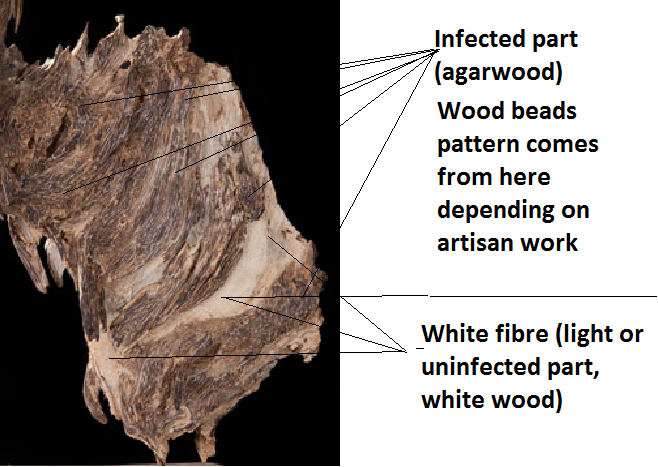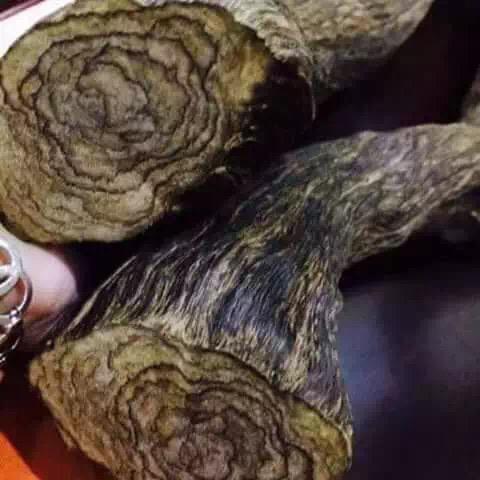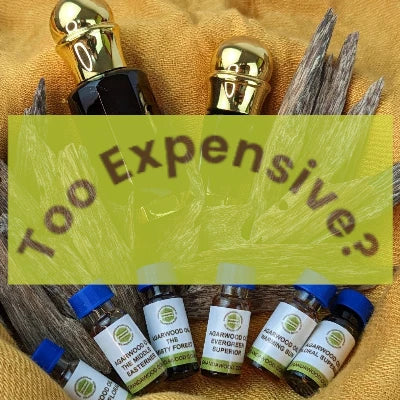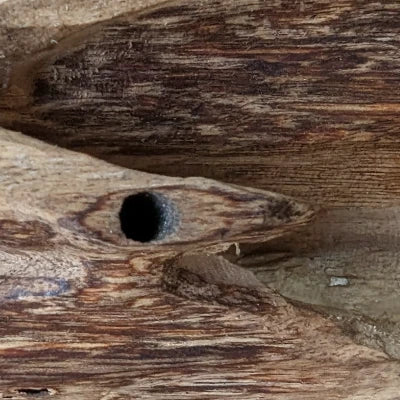Menu
-
-
F.A.Q
- How to identify genuine agarwood chip, natural or cultivated
- How to identify oil injection / absorption fake agarwood beads
- How to know if there are more than one oil in your oil
- How to make your wood bracelet or mala darker
- How to tell if an Agarwood bead sinks WITHOUT sinking it under water?
- How does back flow incense work and how do you burn it?
- Where to start if you don't know what agarwood is ?
- Why are you losing money if you buy seeds and plants?
- Which agarwood incense should I choose?
- Frequently Asked Questions
- Agarwood Related Articles
- Shipping
-
SHOP - Agarwood
-
SHOP - Other Fragrant Wood
-
SHOP - Incense Holder and Burner
-
- FREE guide book
- Testimonials
- "Why did you buy this?"
- Contact us
- About Us
- +61430284329
- Login
-
English


How to identify oil injection / absorption fake agarwood beads
March 30, 2015 5 min read
9 CommentsHave you noticed the number of counterfeit agarwood prayer beads increased consistently? You have been looking for a genuine one but felt confused and did not know where to look for?
Maybe in the past, you invested in one and had been let down. You have been scammed multiple times, and you do not know who to trust anymore.
Why am I revealing this to you?
I knew how you felt. Your confidences shattered. You were sick of filing a claim through Paypal or through your credit card provider which took months to finalise.
Would it help if I show you what to look for so you can at least minimise the trouble? Of course, if you met an unscrupulous agarwood seller, he/she who had the intention to cheat will cheat, and he/she were getting better at cheating. However, the below principal would help you during the “preliminary “process (checking, smelling, observing before investing yourself a right agarwood bracelet/mala). Let me walk you through some steps.
Updated: 25/01/2018
Recently one of our clients came across a black bracelet and was told that what he was buying was a high-resin agarwood bracelet.

After making some offers, he got the bracelet home and asked us to verify. Without mentioning the price, we started our process:
1) Agarwood Smell and appearance
If the product is genuine, you would be able to detect the natural fragrance wood. If you discover any unusual scent, for example, alcoholic, or chemical smell, this indicates a possible counterfeit item.
Genuine agarwood beads usually ARE NOT SOLID in colour, mainly black. Simple fact, Agarwood beads are made from wounded Aquilaria tree, which contains white fibre and infected wood. People will tell you that the beads were made purely with the infected part, but it is not valid. Below pictures show how resins distributed within the wood.

The value of the agarwood beads lies on the resin (more resin, more expensive) as it might take decades to form for the sinking grade. These agarwood pieces are often very old, and you could detect the scent of it at room temperature.
Agarwood log: there are some white fibre in the peripheral area as well as some dark resinous parts which take years or decades to form. Hence it would be unwise to make beads out of it (and it is not enough material to make it anyway). Below are pictures of cultivated and wild agarwood log:

(Image from Google, cultivated agarwood )

(Source: our agarwood hunters)
Cutting log into square beads size before filing rounding and polishing

The most resinous part was taken out to make beads leaving the "frame" who has lesser value as below.

(Source: from our agarwood hunter, Borneo agarwood)

(This quality log would be suitable for chips, incenses, oil or 108 mala beads as its consistent patent)
From the above logs, there is no part which is 100% black or brown hence so the agarwood beads.
Any beads which are solid in colour are injected with agarwood oil and other spice to create a pleasant fragrance; hence, there is little value on its.
Below are white wood with a small infection compared to resinous beads. Please look at the pattern.

2) Resin
Boil the water, quickly submerge a bead into it in 30 seconds and observe. If the water starts changing its colour slightly (if you boiled any wood, the water texture would change anyway), that is fine,
By contrast, if you saw cloudy stuff formed around the bead, it would mean this bead was tampered.

Melted substance (mainly mix with oil and other unknown substance)

OR
Chop the beads in half; you would be able to detect shiny vein, turn the beads up and down and move slightly.

(oil-injected Aquilaria Crassna using high pressure, no shiny vein is detected - image courtesy Tram Huong Viet)

( image courtesy Tram Huong Viet, Plain Aquilaria Crassna without infection, not agarwood)

Young genuine agarwood beads with a small amount of resin.
If you look closely, you can see some shiny veins which oil-injected bead does not carry.
3) Under microscope or magnifier
The bead below shows moderate resin (agarwood) without any artificial dying colour/agent. The pattern is natural and random.
Genuine agarwood beads should look similar or better (with more "resin line). Any solid colour beads have tampered with the dying agent might not be real agarwood as this act ruined the fragrance of it.

For high-grade agarwood beads, watch out for tricks like lead or iron injection into beads to increase weight.

(picture above shows an attempt to deceive the weight by iron insertion for sinking grade).
Agarwood beads appearance
1) Low resin mala beads 7mm

2) High resin mala beads 7mm

P/S
Online sellers often claim that their beads are NATURAL, GENUINE beads, terms like "black agarwood/ eaglewood" rare are used frequently. Here is an example:

- No pattern visible but solid colour. Agarwood is infected wood which would show random "pattern".
- The smell is overwhleming from a distance, which indicates "scent" has been injected. In this instance, a mixture of spice and agarwood oil.
- Weight is more than 35g and sunk underwater with a price of less than $1000 USD. The bracelet sank because of something else rather than the resin of it.
- It might not be agarwood at all, but just any wood injected with oil to create agarwood scent.
More example:
More agarwood beads claimed, but they turn out the counterfeit item
Too black and shiny, and heavy feel. There is limited grain (pattern or infected area)
The below image confirmed it is non-agarwood beads as it is dyed with colour.
Please compare to the genuine beads below.


Updated on 27/09/2016
4) Pattern
We are very proud to carry on this business from our grandparents hence never supplied an inferior product if in doubt.
Here is the most popular pattern of agarwood beads, by learning the genuine one, you could tell the counterfeit apart. The below was sold at circa $1200 AUD.

We have consulted several clients for specific agarwood patterns. Recently, we come across a few buaya or crocodile agarwood (this species is entirely different from Thymelaeaceae family, the genus Gyrinops and Aquilaria). Below are pictures that claimed genuine agarwood but made from "buaya",
Buaya: crocodile agarwood. Hardwood, with resin, the smell is not as pleasant as agarwood.
The essential oil distilled from it giving a cloudy white colour. There is nothing wrong with this wood as it made beautiful wooden beads. Unscrupulous sellers inflate its price or tell consumers it is agarwood.
Buaya beads: please note, in Hongkong and China, these beads (buaya) are being sold as agarwood. PLEASE BEWARE
The resin formed is not one of agarwood pattern.
If in doubt, carry a magnifier: you would see a similar pattern to a wood chip. It contains oil pores and long-shape island (resin). The shape is oval or elliptically long and evenly distributed. These are the unique features of Aquilaria species.
Original bracelet

For example, please see the below beads, it shows that bead pattern is made from the young or early infected area,

To make it is easier for you what the pattern comes from, please see the below log, please see the top section and compare with the next image
For GENUINE AGARWOOD BEADS, PLEASE VISIT OUR COLLECTION HERE
If you saw 2-polar beads, it is very likely made from cultivated agarwood as below image.

If you are interested in agarwood beads and water testing, please click here.
Small agarwood carving
Smell the artifact first, and check surrounding to detect any glue was used.

Check behind

The fibre looks genuine, similar to agarwood chips.
What about the below


It looks genuine, but the weight was a bit heavy. Smell odd? Look below; this is a giveaway; the fibre is NOT Aquilaria fibre. This item is NOT AGARWOOD.

READ PART 2 HERE
9 Responses
Leonus Tan
November 25, 2019
I have alot of agarwood beads… Not sure how good it is. Have a sample with me… Can help to verify?
likom riba
August 28, 2017
Thanks to know about it.
Pamela Cook
June 28, 2017
thank you for sharing. the article is indeed extremely helpful. I love Kalimantan and Vietnam agarwood prayer beads, it is very difficult to buy natural and high quality beads.
best regards, Pamela Cook 28jun2017
David Gerena
March 25, 2017
We texted today and I thank you for your time. This article is very helpful. I’m looking forward to calling tomorrow and placing my order.
Hanshentan
January 20, 2017
Thank you for this article. Really help me out as it is not easy to tell and buy genuine beads at current market
Jack Cheng
December 13, 2016
Thank you for telling the trick ! It is really an interesting article.
Lim Y Po
September 27, 2016
Thank you for this info. So many fake online sellers these days
Lan Dong
November 18, 2015
Hi i would like to purchase some agarwood beads,how do i go about it?
Leave a comment
Comments will be approved before showing up.
Also in News

Anoint with The Zen Path, and you will never yearn for the artificiality that numbs the senses
March 03, 2024 2 min read

You say: “Your Agarwood is too expensive”. Let’s Reason Together - about Price
February 14, 2024 8 min read










Serene
May 17, 2020
looking for an argawood rosary budget around S$1000 , are u able to recommend ?